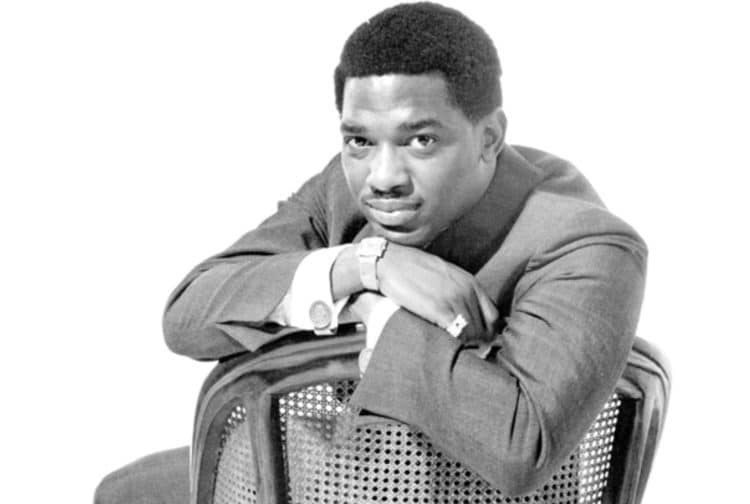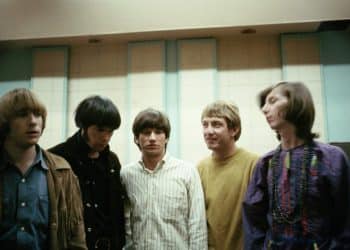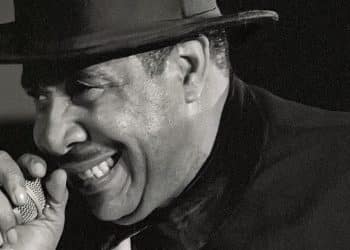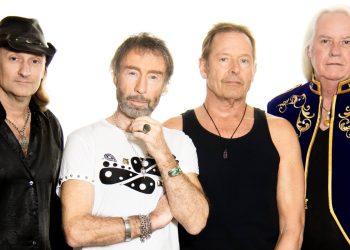Edwin Starr was an American soul and R&B singer-songwriter born on January 21, 1942, and passed away on April 2, 2003. He was born Charles Edwin Hatcher in Nashville, Tennessee.
Starr is best known for his energetic and powerful vocals, as well as his socially conscious lyrics. He rose to fame in the late 1960s and early 1970s with a string of hits on the Motown label.
One of Starr’s most famous songs is “War,” released in 1970. The song became an anthem for the anti-Vietnam War movement with its powerful and impassioned delivery. “War” reached the top of the Billboard Hot 100 chart and remains one of the most iconic protest songs of all time.
Starr’s other notable hits include “Twenty-Five Miles,” “Stop Her on Sight (S.O.S.),” and “H.A.P.P.Y. Radio.” His music often combined elements of soul, funk, and rock, and he was known for his dynamic stage presence and electrifying live performances.
Throughout his career, Starr remained a respected figure in the music industry and continued to perform and record until his passing. He left a lasting legacy as one of the most influential soul singers of his generation, and his music continues to inspire and resonate with audiences around the world.
1. War
“War” is a song originally recorded by The Temptations, a Motown vocal group, in 1969. However, it was Edwin Starr’s version that became the most famous.
Released in 1970, Edwin Starr’s rendition of “War” became an anthem for the anti-Vietnam War movement. The song’s powerful and gritty delivery, combined with its socially conscious lyrics, resonated with audiences around the world.
“War” features a driving rhythm, intense vocals, and a catchy refrain. The song’s message is a stark condemnation of war and its devastating effects on humanity. It calls for an end to conflict and violence, with the repeated refrain “War, what is it good for? Absolutely nothing!”
Starr’s version of “War” was a commercial success, reaching the top of the Billboard Hot 100 chart in the United States. It remains one of the most iconic protest songs of all time and has been covered by numerous artists in various genres.
“War” has endured as a powerful symbol of resistance and social change, and its message continues to resonate with audiences as a reminder of the human cost of war and the importance of peace.
2. Twenty-Five Miles
“Twenty-Five Miles” is a song originally recorded by Edwin Starr in 1968. It was written by Johnny Bristol, Harvey Fuqua, and Edwin Starr himself.
The song’s lyrics tell the story of a man who is determined to walk twenty-five miles in order to see his loved one. Despite the physical distance and obstacles in his way, he is determined to reach his destination and be with the person he loves.
“Twenty-Five Miles” is characterized by its upbeat tempo, infectious groove, and energetic vocals. The song features a driving rhythm section, punchy horns, and Starr’s dynamic vocal delivery, making it a standout track in the realm of soul and R&B music.
The song was a commercial success, reaching No. 6 on the Billboard Hot 100 chart in the United States. It also achieved success on the R&B charts, where it peaked at No. 6.
“Twenty-Five Miles” remains one of Edwin Starr’s most popular and enduring songs. Its catchy melody and relatable lyrics have made it a favorite among fans of classic soul and R&B, and it continues to be celebrated as a classic in the genre.
3. Stop the War Now
“Stop the War Now” is a song by American soul singer Edwin Starr. It was released in 1970 as a single from his album “Involved.”
The song is a protest against war and violence, advocating for peace and unity instead. Starr’s powerful vocals and the driving rhythm of the music emphasize the urgency of the message. The lyrics call for an end to conflict and the importance of coming together to build a better world.
“Stop the War Now” became one of Edwin Starr’s signature songs and was particularly relevant during the Vietnam War era. Its message resonated with audiences who were grappling with the impact of war and seeking ways to promote peace.
While “Stop the War Now” did not achieve the same level of commercial success as some of Starr’s other hits, such as “War” and “25 Miles,” it remains a powerful and enduring anthem against violence and conflict. The song’s themes continue to be relevant in contemporary discussions about war and social justice.
4. Agent Double-O-Soul
“Agent Double-O-Soul” is a song by American singer-songwriter Edwin Starr. It was released in 1965 as a single and became one of Starr’s early hits.
The song is an upbeat and energetic soul track that showcases Starr’s powerful vocals and dynamic stage presence. The lyrics tell the story of a suave and confident secret agent, referred to as “Agent Double-O-Soul,” who is always one step ahead of his adversaries. The song’s catchy melody and infectious rhythm made it a favorite on the dance floors of the 1960s.
“Agent Double-O-Soul” helped establish Edwin Starr as a rising star in the world of soul music. While it may not be as well-known as some of his later hits like “War” and “Twenty-Five Miles,” the song remains a classic example of Starr’s early work and a favorite among fans of 1960s soul music.
5. S.O.S. (Stop Her on Sight)
“S.O.S. (Stop Her on Sight)” is a song by Edwin Starr, released in 1966. It was written by Edwin Starr himself, along with Johnny Bristol and Harvey Fuqua.
The song’s lyrics depict a man’s frustration and determination to stop his lover from leaving him. He pleads with others to intervene and prevent her departure, urging them to “stop her on sight” before it’s too late.
“S.O.S. (Stop Her on Sight)” is characterized by its infectious rhythm, catchy horn section, and Starr’s powerful vocal delivery. The song features a driving Motown beat and energetic instrumentation, typical of the era’s soul and R&B music.
The song was a moderate success, reaching No. 48 on the Billboard Hot 100 chart in the United States. It also achieved success on the R&B charts, where it peaked at No. 9.
“S.O.S. (Stop Her on Sight)” remains a popular track in Edwin Starr’s catalog and is considered a classic in the realm of Motown and soul music. Its upbeat tempo and memorable melody continue to resonate with audiences, making it a favorite among fans of the genre.
6. Funky Music Sho Nuff Turns Me On
“Funky Music Sho Nuff Turns Me On” is a song by American soul and R&B group The Temptations. It was released in 1971 as a single from their album “Sky’s the Limit.”
The song is an upbeat and funky track that showcases The Temptations’ trademark harmonies and energetic performance style. The lyrics express the joy and excitement of dancing to funky music, with the narrator proclaiming that it “turns me on” and lifts their spirits. The song’s catchy melody and infectious groove made it a popular choice on the dance floors of the early 1970s.
“Funky Music Sho Nuff Turns Me On” was a commercial success, reaching the top ten on the Billboard R&B chart and the top forty on the Billboard Hot 100 chart. It remains a favorite among fans of The Temptations and is often included in their live performances and compilations of their greatest hits.
7. Contact
“Contact” is a song by Edwin Starr, released in 1978. It was written by Edwin Starr, Angelo Bond, and Greg Perry.
The song’s lyrics celebrate the joy and excitement of falling in love and making a romantic connection with someone. It describes the electrifying feeling of physical and emotional contact between two people, capturing the exhilaration of new love.
“Contact” is characterized by its upbeat disco rhythm, infectious groove, and energetic vocals. The song features a danceable beat, funky bassline, and catchy hooks, typical of the disco music of the era.
The song was a moderate success, reaching No. 65 on the Billboard Hot 100 chart in the United States. It also achieved success on the dance charts, where it became a popular club hit.
“Contact” remains a favorite among fans of disco music and Edwin Starr’s catalog. Its infectious energy and feel-good vibe make it a timeless party anthem that continues to be enjoyed by audiences around the world.
8. H.A.P.P.Y. Radio
“H.A.P.P.Y. Radio” is a song by American soul and funk artist Edwin Starr. It was released in 1979 as a single from his album “H.A.P.P.Y. Radio.”
The song is an upbeat and lively disco-funk track that promotes positivity and joy. The lyrics celebrate the power of music to uplift and unite people, with the chorus repeating the phrase “I love to listen to the H.A.P.P.Y. Radio.” The song’s infectious groove and catchy melody made it a popular choice on dance floors during the disco era.
“H.A.P.P.Y. Radio” was a commercial success, reaching the top twenty on the Billboard R&B chart and the top thirty on the Billboard Hot 100 chart. It remains one of Edwin Starr’s most well-known songs and is often included in compilations of disco and funk music from the late 1970s.
9. Soul Master
“Soul Master” is the title of an album released by Edwin Starr in 1968. The album features a collection of songs that showcase Starr’s soulful vocal style and energetic performances.
The album received positive reviews and helped establish Starr as a prominent figure in the world of soul music. It features a mix of upbeat, danceable tracks and heartfelt ballads, highlighting Starr’s versatility as a singer and performer.
“Soul Master” remains a favorite among fans of classic soul and R&B music, and it is considered one of Edwin Starr’s definitive albums. It showcases his talent and charisma as a soul singer and solidifies his legacy as a soul master indeed.
10. Headline News
“Headline News” is a powerful, socially conscious masterpiece that showcases Edwin Starr’s incredible ability to use his music as a force for change and a platform for important issues. The song’s urgent, funk-influenced arrangement and Starr’s impassioned, soulful vocals create an atmosphere of righteous anger and fierce determination, as he sings of the need for justice and equality in a world plagued by violence, racism, and corruption. The lyrics, filled with references to real-life events and the struggles of marginalized communities, are delivered with a sense of urgency and moral clarity that is both deeply moving and profoundly inspiring. Starr’s powerful performance and the song’s uncompromising message have made it an enduring classic and a testament to the role of music in the fight for social and political change. “Headline News” is a shining example of Starr’s ability to create music that is both deeply entertaining and socially relevant, cementing his legacy as one of the most important and influential soul artists of his generation.









